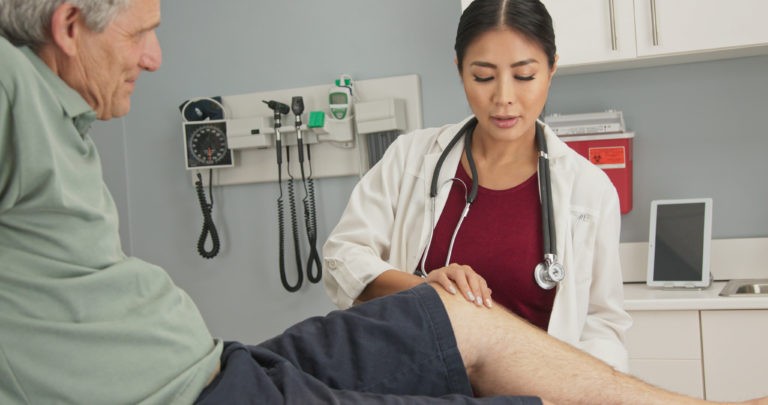VA Disability Compensation for Torn Meniscus

CCK Law: Our Vital Role in Veterans Law
What is a Torn Meniscus?
A torn meniscus is a very common knee injury and can be caused by any activity that involves forcefully twisting or rotating your knee (e.g., aggressive pivoting, sudden stops and turns, deep squatting, or lifting something heavy). In older adults, degenerative changes of the knee can also contribute to a torn meniscus. The meniscus functions as a cushion between your shinbone and your thighbone and can be found in each knee. Signs and symptoms of a torn meniscus include:
- A popping sensation
- Swelling or stiffness
- Pain, especially when twisting or rotating your knee
- Difficulty straightening your knee fully
- Feeling as though your knee is locked in place when you try to move it
- Feeling of your knee giving way
Diagnosis of Torn Meniscus
To diagnose a torn meniscus, you will likely have to attend a physical examination. The doctor may move your knee into different positions and observe you walking/squatting to help determine the cause of your symptoms. In many cases, imaging tests (e.g., X-rays and MRIs) are also used to confirm a diagnosis. A doctor may also perform an arthroscopy, during which the doctor uses an instrument known as an arthroscope to examine the inside of your knee.
Treatment of Torn Meniscus
Treatment for a torn meniscus depends on the type, size, and exact location of the tear. To start off, your doctor might recommend the following:
- Rest – Avoiding activities that aggravate your knee pain; using crutches to take pressure off the knee as necessary.
- Ice – Using ice to help reduce pain and swelling; ice for about 15 minutes at a time as often as needed while keeping your knee elevated.
- Medication – Over-the-counter pain relievers can help ease knee pain.
- Physical therapy – Rehabilitation and physical therapy can help strengthen the muscles around the knee to help stabilize and support the joint.
- Surgery – If your torn meniscus remains painful after non-surgical interventions, surgery may be required.

Veterans and Knee Problems
Knee problems are commonly claimed for VA benefits. According to the VA 2015 Annual Benefits Report, limitation of knee flexion was the fourth most commonly-claimed disability during that fiscal year, with over 80,000 veterans receiving disability benefits for this condition. In total, nearly 658,000 veterans receive service-connected compensation for limited knee flexion. To be granted direct service connection for a knee problem, such as a torn meniscus, veterans must demonstrate the following:
- A current diagnosis of a knee problem (e.g., torn meniscus);
- An in-service event, injury, or illness; and
- A medical nexus linking the current, diagnosed knee problem to the in-service occurrence.
How Does VA Rate a Torn Meniscus?
Importantly, there are several ways that knee conditions can be evaluated under the Veterans Affairs Schedule for Rating Disabilities. Veterans filing a claim or appealing a claim denial for a knee problem should be aware of the various possible ratings under 38 CFR § 4.71a. However, VA generally rates a torn meniscus under one of two Diagnostic Codes:
Diagnostic Code 5258
If the cartilage frequently dislocates, causing pain, swelling, and locking in the knee, it receives a 20 percent rating.
Diagnostic Code 5259
If the cartilage is removed, and there is pain or other symptoms in the knee, the condition is rated as 10 percent disabling.
About the Author
Share this Post
